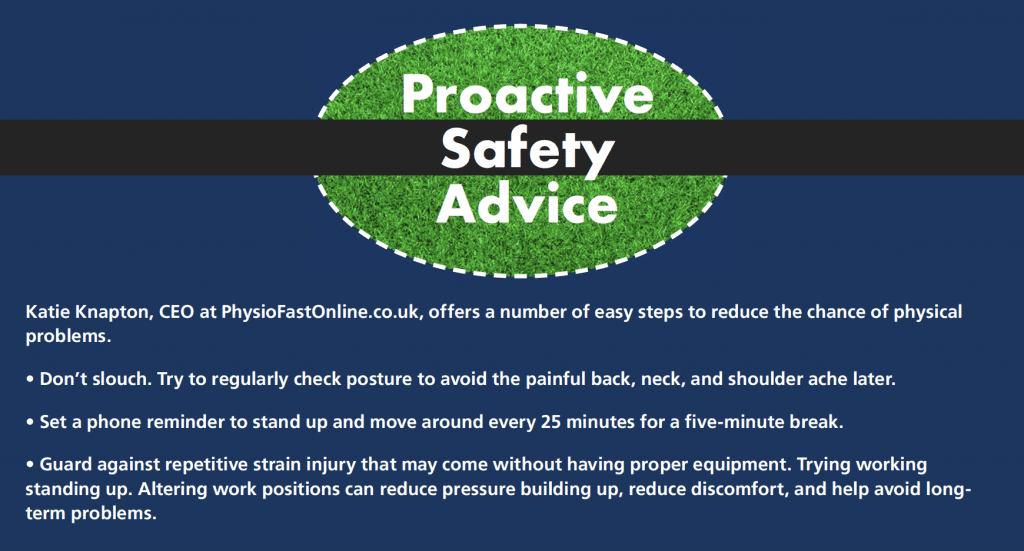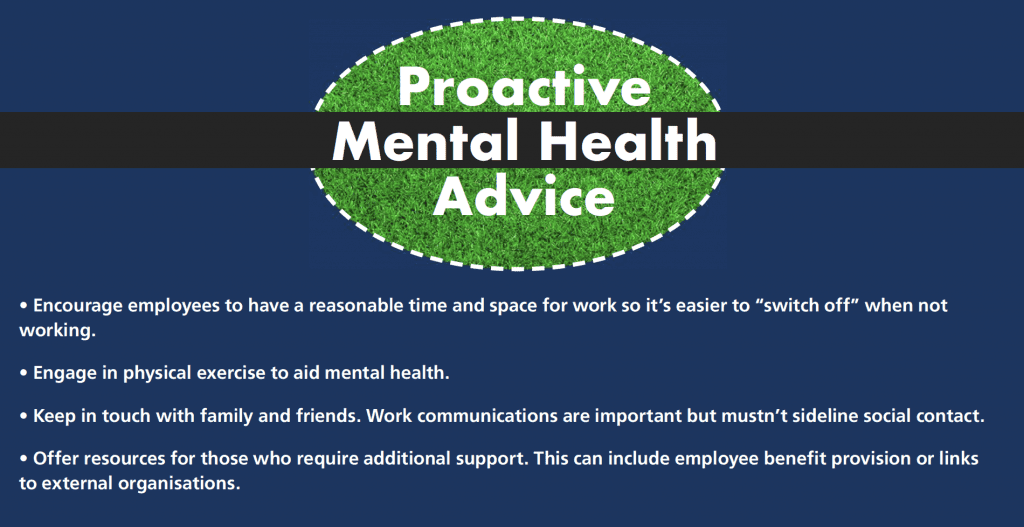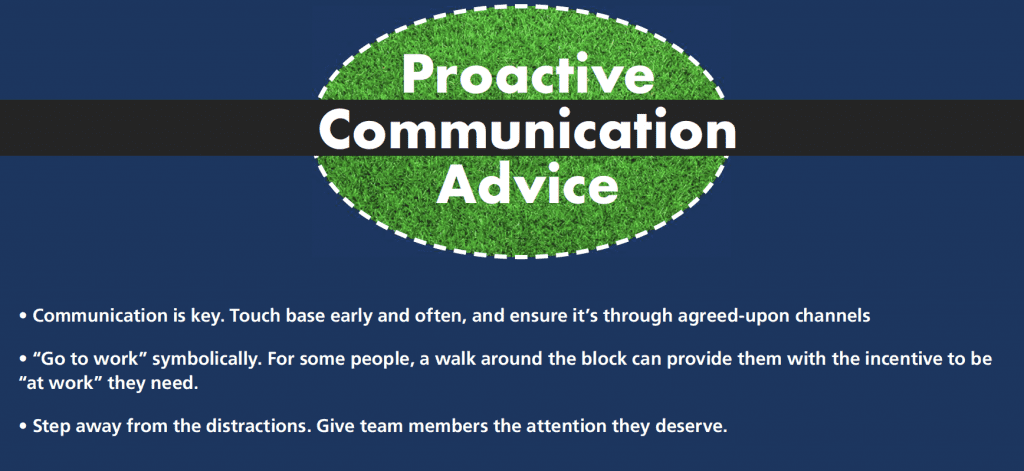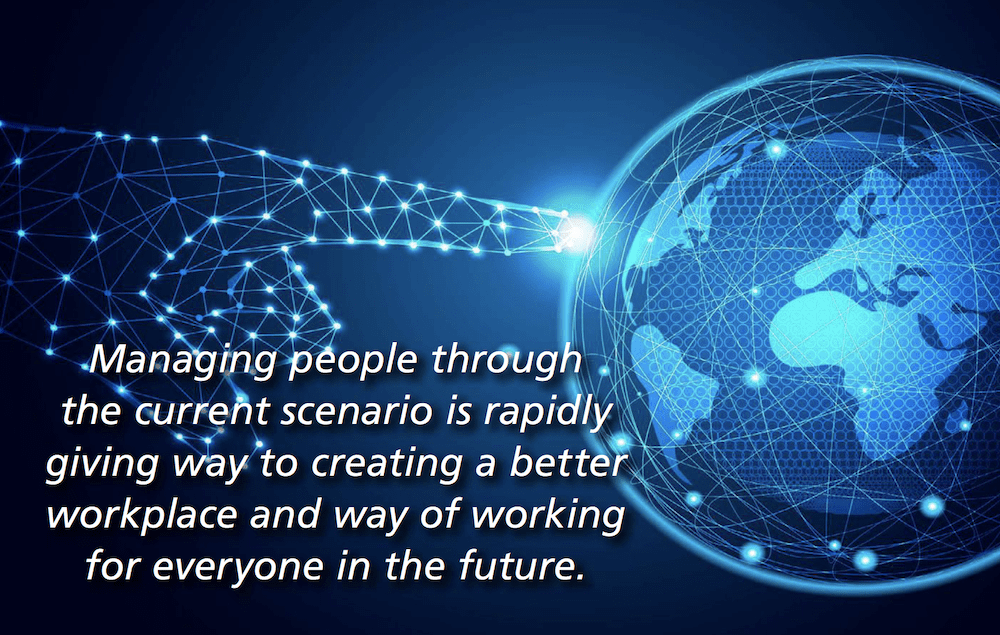From wellness to management, HR leaders share how the COVID-19 pandemic will impact the world of work now and in the future.
By Simon Kent
As the global pandemic forced businesses into lockdown and new challenging ways of working, the pressure on HR to adapt, instruct, and cope has been immense. It is interesting to note that a recent poll by the CIPD of HR teams in the UK found that 63 per cent of HR respondents saw no change to the headcount of their teams, whilst an additional 2 per cent said they would actually be growing the function. This is just one indication of the ongoing role HR now has in making businesses work in the new normal.
“In these challenging times, the role of HR is crucial as many people have questions, need advice, and often just want to have a sparring discussion what to do,” says Ingrid Kraaijbeek, HR leader of people solutions at Bridgestone. Her company has put into place a number of initiatives across EMIA to support employees in all countries. She explains the business doesn’t want employees to worry about pre-set goals that may now not be achievable. “It is all about connecting with our employees, making sure they can work in safe circumstances, having them speak up about workload, help them prioritise, and stay focused, and for them to know that our leaders are there to help them.
“We have amazing people who have been showing commitment and dedication, they are facing a very high workload at the moment and helping them to prioritise, focus and feel at ease in these circumstances is key,” she adds. “I am fortunate that my manager does the same with me.”
“Productivity is a difficult thing to measure in these challenging times,” admits Amy Tomlinson, head of HR at MetLife UK, “but there are some basic milestones, such as call volumes, that we can compare before home working was implemented.”
Tomlinson emphasises that her team is aware that employees’ new workspaces will have a huge impact on their productivity. “We understand that working from home, for some, comes with children needing to be homeschooled and dogs barking at the postal worker, for example. We want our people to feel comfortable changing their working patterns to accommodate these challenges. Teams have embraced this approach and we trust our people to monitor their own productivity. We understand finding the balance can be tough for many with so much going on and we try to offer our people as much support as we can wherever possible.”
Ellen Petry Leanse, chief people officer for Lucidworks, also highlights the need for HR to keep a firm grip on the compliance side of managing the newly homebound workforce. “My team has been diligent about understanding changes in law, policy, and even benefits at this time so we can keep employees in the know and let them focus on the work they’re there to do,” she explains. One part of this has been the creation of a “Virtual Care Package.” This programme offers a wide array of physical health, mental wellness, and productivity tips along with resources for entertainment, exercise, and family activities.
Employee wellness is also a concern for Regine Beuttner. The executive vice president of global HR for DHL Express is managing a workforce that is still very much active and working in its usual environment, although it is now under added pressure and risk. “Whilst employee recognition has always been central to the way we operate at DHL Express, now more than ever, we need our workforce to know how much their efforts and commitment is appreciated. Now is not the time for business awards or accolades, but for authentic and frequent acknowledgement of your employees’ everyday efforts,” she says.
The current climate is pushing companies to be agile in their approaches. “Typical responses won’t work today due to the size and pace of economic change, the urgency of the demands, and the unpredictability of what comes next,” says David Pierce, executive vice president of global commercial at Axiom. “The recession will force teams to reset how they resource work. In order to stay in control amidst hiring freezes and budget cuts, leaders must recalibrate their legal spend, retaining control over risk, resources, and their teams.”
In other words, HR is only at the start of what will be an incredibly challenging time. Moving forward, Pierce advises managers to be transparent in what they do and set realistic expectations of their workforce. Leaders also need to be empathetic and acknowledge the uncertainty and doubt that employees are facing, and they must stay connected.
However, the issue of staying connected is by no means simple in the maelstrom of conference calls, messages, WhatsApp conversations, and webinars directed at employees. HR needs to strike a balance between communicating with employees and ensuring they don’t feel overwhelmed by the wide breadth of channels.
Julie Chell, chief people officer of public sector software firm Civica, is keen to find out what her employees are experiencing from the frontlines. “As we’re currently unable to get a sense of how people are feeling through normal, ad-hoc conversations, we’re rolling out regular pulse surveys to understand the issues that our people face around the globe, so we can proactively and quickly improve things and make sure colleagues feel supported,” she says.
“I feel we have two choices at this time,” says Petry Leanse of Lucidworks. “The first would simply be to get sucked into the vortex and spend our day obeying the commands of various technologies to log into this, respond to that, text everyone an update. We’d get a bunch of nice little dopamine jolts from all of that, for sure, yet we might miss the chance to be satisfied by real productivity and contribution. The other choice is to use this time to shift our behaviours, reclaiming time for focused, deeper work that can actually generate better results and more satisfaction.”
For Leanse, this means encouraging employees to schedule their days with key objectives in mind -identifying what makes a difference rather than just what keeps people busy -and advocating employees to block work time on their calendars, join the regular learning sessions the company now offers, and to embrace their new “no meetings on Friday” policy.
As practices have changed, people are acknowledging that just as the world will not revert back to the way it was any time soon -or possibly ever -nor will HR. Agility has always been important to retain the competitive edge, but these changes go further to impact on how employees work together every day.
Ute Schouten, HR director at water and waste company SUEZ Germany, reports that the new way of working has brought with it some clear benefits. “Everybody has noticed -sometimes with surprise -that many things can be handled much easier than before,” she says. “Many managers had mixed feelings about regular remote work for their team -now it works quite naturally and performance is good.”
Within her own function, unnecessary bureaucracy has been reduced and systems became more efficient as a result. “In HR, we consider every personal signature -if it is really necessary or if we could do it with Adobe sign. Very often, we decide that Adobe sign will do. We are more than happy about the digital HR files and have developed new processes to store documents more easily. Those are procedures which will not be changed back. The use of the camera in digital meetings is quite common now, and sometimes we have the impression that discussions are even more intense and focused than in a personal meeting,” she says.
Chell agrees that some COVID response practices will now stand firm for Civica. “We’ve also already got one eye on the future,” she says. “We all know that future working needs to be more agile, similar to how we’re currently working. In this global crisis, we’re being more innovative and creative than ever as we look for solutions to the everyday challenges of social isolation, uncertainty, and supporting each other and our extended families through sickness and personal challenges.”
Considerations for the New Normal
Whilst the pandemic can never be viewed as having a positive impact for any business or any person, HR professionals are already ensuring their reaction is not just defensive and negative. Managing people through the current scenario is rapidly giving way to creating a better workplace and way of working for everyone in the future. Here are some of the pieces of the workforce puzzle that HR needs to navigate as the business world evolves during COVID-19 and moves into a new normal.
- Mental health. Organisations need to make an extra effort to support their employees’ mental well-being whilst they are working away from their usual workplace and adapting in the coming months. Sarah McIntosh, director of people and organisational effectiveness at Mental Health First Aid (MHFA) England, encourages employers to reach out to colleagues regularly during remote working.
“Keeping connected as a team at this time can really help those who are struggling by giving them the opportunity to speak up and ask for help,” she says. “You don’t have to be an expert to discuss mental health. You can start by asking open questions like, ‘What are you doing to take care of yourself?’ and ‘How are you feeling?’ If they do open up, the best thing you can do is be empathetic, actively listen, and offer reassurance and support.”
- Employee safety. According to a CIPD report, just 5.3 per cent of workers were regularly using their home as their main place of work prior to the impact of COVID-19. “The reality we face is that lots of people are working at home, possibly for a prolonged period of time and very few were prepared for this scenario,” says Dan Joyce, general manager for EMEA at SafetyCulture, an organisation that provides a digital platform to help HR check the important issues with their employees.
HR challenges in terms of health and safety are wide ranging and will differ from sector to sector. SafetyCulture’s solution features thousands of templates, some sanctioned by CIPD, WHO, CDC, and other authorities and many specific to the coronavirus. Issues under consideration range from compliance with working time directives to ensuring employees do not develop muscular-skeleton conditions from poor seating or computer use.
- Leadership. One of the main stumbling blocks to remote and flexible working in the past has been management. Organisations have been wary of letting go of a “hands-on” approach, with the switch to managing by output rather than input proving elusive for many.
Michele Don Durbin, senior vice president of marketing for Evernote, explains that managers need to consider how working and communicating has changed and create ways that work for the here and now. Written messages, whether through email or message services, can be misunderstood in content or tone, so if something needs to be said just say it.
“As a team, you should agree which communications should happen via which channel,” she advises. “This will help to build cooperation, meet deadlines, and create the trust that’s vital to support working from home.”
















